Automeris granulosa
Updated as per personal communication with Sylvia Barroso, near Tiangua, Ceara, Brazil, November 26, 2017; November 27, 2017
Updated as per personal communication with Francierlem Oliveira, near Taboleiro Grande, Rio Grande do Sul, Brazil, April 3, 2019; April 14, 2019; March 23, 2020
Automeris granulosa
Conte, 1906

Automeris granulosa male, Brazil, courtesy of Leroy Simon.
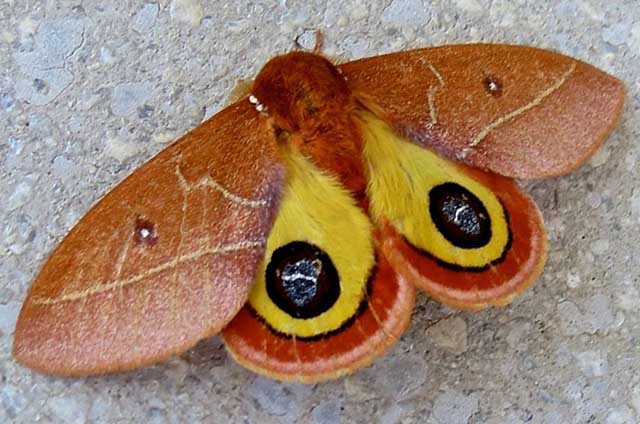
Automeris granulosa male, near Tiangua, Ceara, Brazil,
November 26, 2017, courtesy of Sylvia Barroso.
Possibly the images supplied to me by Sylvia are of an undescribed species. I note the white spot in the forewing cell area is more spherical, and the surrounding
area is noticeably darker in the Tiangua image, compared to the Leroy Simon image, but the differences could also fall within natural variation.
TAXONOMY:
Superfamily: Bombycoidea, Latreille, 1802
Family: Saturniidae, Boisduval, [1837] 1834
Subfamily: Hemileucinae, Grote & Robinson, 1866
Tribe: Hemileucini, Grote & Robinson, 1866
Genus: Automeris, Hubner, [1819] |
DISTRIBUTION:
Automeris granulosa
(wingspan
63-83mm, females larger than males) flies in
central and
southwestern Brazil: Alagoas; Ceara: Tiangua (SB); Bahia: ; Rio Grande do Norte: Taboleiro Grande (FO); Federal District;
Goias; Mato Grosso; and probably in
Mato Grosso do Sul, in Cerrado areas (savanna).
The image below indicates a range extension into
northern
Paraguay: UD:
Alto Paraguay,
Boqueron and
northern Presidente Hayes.
I suspect it also flies in similar biotype in eastern
Bolivia.

Automeris granulosa male, Boqueron, Paraguay, courtesy
of Ulf Drechsel.

Automeris granulosa male, Taboleiro Grande, Rio Grande do Norte, Brazil,
April 3, 2019, courtesy of Francierlem Oliveira, id by Bill Oehlke.
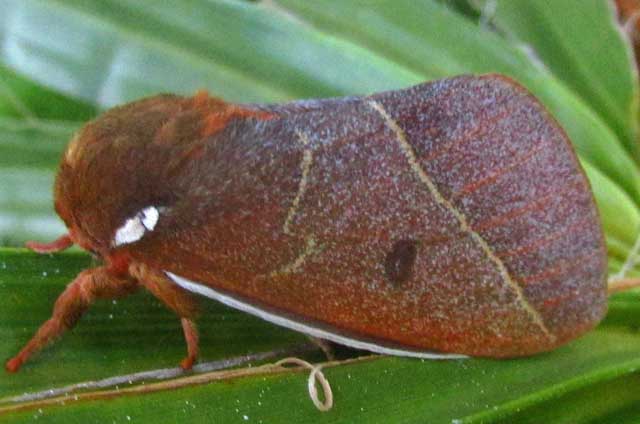
Automeris granulosa male, Taboleiro Grande, Rio Grande do Norte, Brazil,
March 23, 2020, courtesy of Francierlem Oliveira, id by Bill Oehlke.
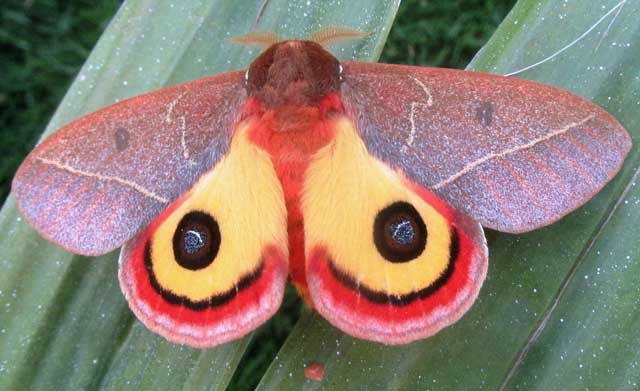
Automeris granulosa male, Taboleiro Grande, Rio Grande do Norte, Brazil,
March 23, 2020, courtesy of Francierlem Oliveira, id by Bill Oehlke.
FLIGHT TIMES AND PREFERRED FOOD PLANTS:
Moths are on the wing in February-March-April and in September-October-November,
and there are possibly other flights. Larvae feed on Erythroxylum tortuosum, Brysonima verbascifolia, Bauhinia and Erythroxylum anguifugm.
Eurides Furtado reports them also on Vatairea macrocarpa and Chamaechrista in Mato Grosso.
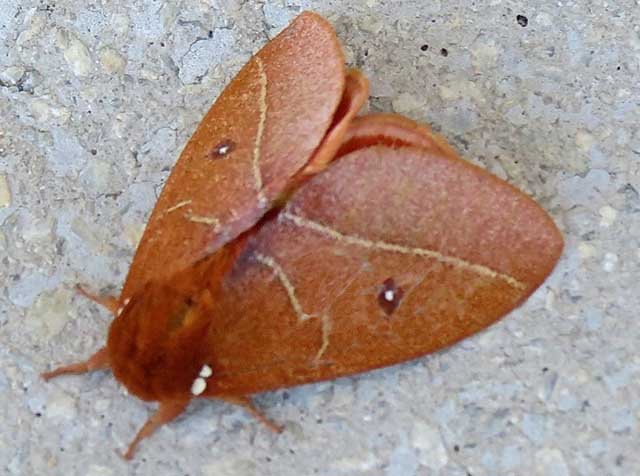
Automeris granulosa male, near Tiangua, Ceara, Brazil,
November 26, 2017, courtesy of Sylvia Barroso.

Automeris granulosa male, Taboleiro Grande, Rio Grande do Norte, Brazil,
April 3, 2019, courtesy of Francierlem Oliveira, id by Bill Oehlke.
ECLOSION, SCENTING AND MATING:
Females extend a scent gland from the tip of the
abdomen. Males use highly developed antennae to track the airbourne pheromone to locate the females.
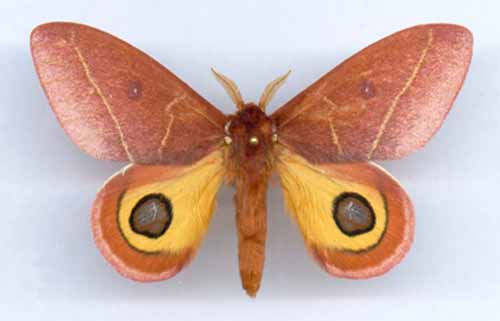
Automeris granulosa male courtesy of Thibaud Decaens.
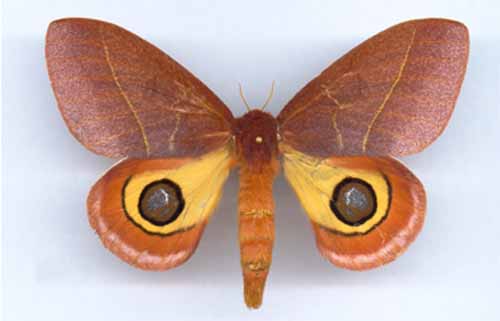
Automeris granulosa female courtesy of Thibaud Decaens.
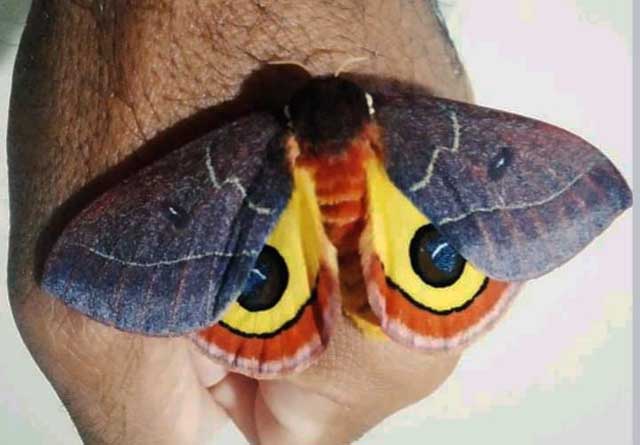
Automeris granulosa female, Lord of Bonfim, Bahia, Brazil,
February 13, 2020, courtesy of Nando Lemos.
EGGS, LARVAE, COCOONS AND PUPAE:
Eggs are deposited in large clusters and larvae are highly gregarious.
Urticating spines offer the Automeris granulosa larvae, which
pass through seven instars,
much protection.
Photo courtesy of Leroy Simon.
The pupa is a
yellow chestnut and is visible through the thin, double-walled cocoon.
Development from oviposition to adult moth is approximately 88 days.

Automeris granulosa fifth instar, Brazil, courtesy of Leroy Simon.
It is hoped that this alphabetical listing followed by the common name of the foodplant will prove useful.
The list is not exhaustive. Experimenting with closely related foodplants is worthwhile.
Bauhinia
Brysonima verbascifolia
Chamaechrista
Erythroxylum anguifugum.......
Erythroxylum tortuosum
Vatairea macrocarpa
| Bauhinia
Brysonima verbascifolia
Chamaechrista
Amargoso/Faveira
Erythroxylum tortuosum
Amargoso/Faveira
|
Return to Main Saturniidae Index
Return to Automeris Genus













